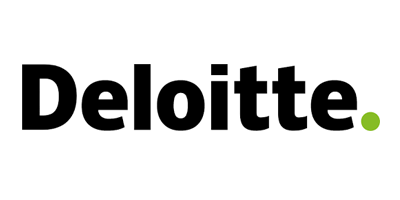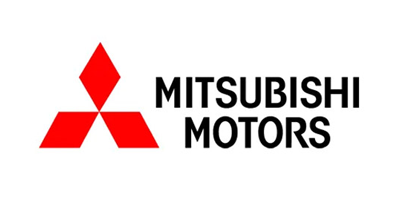

Space Debris Monitoring Market by Technology (Space Debris Monitoring, Space Debris Removal), By Debris Size Range (1mm to 1cm, 1cm to 10 cm, and Greater than 10 cm), by Application (Space Research Organization, Military and Civil), By Orbit Type (Low Earth Orbit and Geostationary Orbit) and by Region - Market Size, Share, Trend, Forecast, Competitive Analysis, and Future Outlook: 2022-2028
Base Year: 2021
Historical Data: 2016-2020
Market Highlights
The anticipated value of the global space debris monitoring market in 2021 was US$ 806.8 million. From 2022 to 2028, the market is projected to increase at a compound annual growth rate (CAGR) of 7.9%, reaching US$ 1.4 billion.
Any kind of non-functional machinery or debris left in space by humans is referred to as space trash. The space debris could have the size of a tiny chip or as big as a boulder. Among the man-made objects left in orbit are spent rocket stages, malfunctioning or dead satellites, and other space trash. Over 27,000 space debris have been recorded by the Department of Defense's Global Space Surveillance Network (SSN) sensors. At 15,700 mph, the spacecrafts and debris are traveling at incredibly high speeds, and a collision between them might result in tremendous catastrophe. All spacecraft, including the International Space Station and SpaceX's Crew Dragon, could be in danger due to the growing population of space junk.
The growing population of junk in space must be managed by the space debris cleanup firms. Additionally, the businesses are concentrating more on developing new technologies, patents, product launches, and other tactics. During the course of the forecast period, a growing number of satellites and growing awareness of space pollution are two major factors that are expected to fuel the expansion of the global space debris monitoring market. Scientists are able to keep up with the growing demand for space debris monitoring systems because of the rise in space tourism. To facilitate the adoption of cutting-edge technology like coherent amplification network lasers and super-wide-field-of-view telescopes, some corporations have expanded their R&D department budgets. These cutting-edge technology will make it possible to locate and eliminate more space debris. The lack of necessary infrastructure and the high cost of research and development are anticipated to impede the growth of the worldwide space debris monitoring market, in contrast to developing and low-income nations.
The COVID-19 epidemic has had a detrimental effect on the global space debris monitoring sector, which in turn has harmed the government organizations' ongoing space activities. Numerous small and mid-sized private enterprises saw profitable chances to enter the market as a result of the pandemic.
Recent years have seen a number of investments in the space debris monitoring sector, which would increase the space debris monitoring market share overall. Among them are:
• ClearSpace SA and the European Space Agency (ESA) signed a contract in December 2020 to carry out the world's first space debris removal mission.
• Astroscale Holdings successfully raised USD 51 million in a Series E investment round.
• In May 2020, the South African National Space Agency (SANSA) and the National Aeronautics and Space Administration (NASA) signed a partnership deal to jointly host a Deep Space Ground Station. The entire amount of money raised is now $191 million USD.
Market Segments
Market segmentation is based on orbit type, with two main categories: Low Earth Orbit and Geostationary Orbit. Over the course of the projection period, the Low Earth Orbit segment is anticipated to continue being the largest market for space debris monitoring. The orbit is less than 1000 km in altitude, and it might potentially be as low as 160 km over the surface of the Earth. The primary cause of this segment's increased growth is scientists' growing interest in launching communication satellites in the Low Earth Orbit region. In the upcoming years, SpaceX plans to increase its investment in providing internet services worldwide. Under the Starlink program, more than 1,400 satellites could be launched in order to accomplish this. The population of space debris in low Earth orbit (LEO) will rise as a result of this program, fueling the expansion of the global space debris monitoring market.
The space debris removal and space debris monitoring segments of the market are divided based on the technology. In 2021, the space debris monitoring business will hold the greatest market share due to the growing need for space exploration and space debris modeling.
The debris size range is used to classify the space debris monitoring market into three categories: 1mm to 1cm, 1cm to 10 cm, and greater than 10 cm. Due to the elimination of small objects from satellite launches and the rise in the number of rocket bodies, the 1mm to 1cm sector holds the largest market share in 2021. Due to the rise in space exploration operations, the 1cm to 10cm segment is anticipated to have substantial growth in the predicted years. There are over 200,000 pieces of space debris that are between one and ten centimeters in size.
Geographically speaking, North America is probably going to continue to dominate the space debris monitoring market for the duration of the projection period. This is largely because the area is home to a large number of space-based businesses. on addition, the U.S. Department of Defense invests a significant sum of money on space debris monitoring in an effort to decrease the quantity of space debris in the next years. Additionally, the existence of several space businesses like the Boeing Company, Altius Space, and Northrop Grumman Corporation is opening up attractive potential for the expansion of the space debris monitoring market in North America.
At the same time, the global space debris monitoring market is anticipated to grow at the quickest rate during the projected period in Asia Pacific. The main causes of the rapid rise are the rising demands from nations like China, India, and Japan for awareness of space debris. With additional cooperation from the Asia-Pacific Space Cooperation Organization (APSCO), the majority of Chinese-based businesses are producing their own optical sensor network, known as the Asia-Pacific Optical Satellite Observation System (APOSOS).
Key Players
The space debris monitoring market is quite competitive. The development of the businesses is directly influenced by a number of variables, including industry circumstances and government backing. These businesses use their new product development and market penetration in emerging areas to distinguish their space debris monitoring solutions from one another. Additionally, a few recent major innovations in the sector have had a big impact on the competitive dynamics.
As an illustration:
• The tracking system and India's first in-orbit space debris monitoring were built in 2020 by Digiantra Research and Technology. By placing a constellation of nanosatellites in low Earth orbit (LEO), the technology will be able to provide worldwide real-time earth coverage. • In 2021, a U.S.-based company called Northrop Grumman Corporation launched its Mission Extension Vehicle 2, a robot spacecraft specifically designed to extend the satellite's life in orbit. Area-based air surveillance has also been implemented in the technology to monitor all spacecraft and objects. By 2025, the business hopes to get the space debris removed.
The mergers and acquisitions have had an impact on the competitive environment generally. The space debris monitoring market leaders are as follows:
• D-Orbit SpA; • Northrop Grumman Corporation; • Raytheon Technologies Corporation; • Astroscale Holdings Inc.
Space Debris Monitoring Market Scope:
| Report Data | Space Debris Monitoring Market |
| Space Debris Monitoring Market Forecast Value 2028 | 1.4Billion |
| Space Debris Monitoring Market CAGR 2022 - 2028 | 7.9% |
| Space Debris Monitoring Market Forecast Period | 2022 - 2028 |
| Space Debris Monitoring Market Base Year | 2021 |
| Regional Scope | North America, Europe, Asia Pacific, South America, and Middle East & Africa |
| Key Companies Profiled | • D-Orbit SpA; • Northrop Grumman Corporation; • Raytheon Technologies Corporation; • Astroscale Holdings Inc.. |
| Key Segments | By Technology By Debris Size Range By Application By Orbit Type By Region |
| Report Coverage | Market Sizing, Market Forecasting, Market Dynamics, Market Trends, Market Development Analysis, Market Share Analysis, Regional Analysis, Competitive Positioning, Competitive Benchmarking, Competitive Landscape, Company Profiling, Regulation Analysis, etc. |
Get Your Report Customized
Further segmentation of the market on the basis of type, application, end use, product, technology, method, process and any other segment depending on the market
Segmentation on the basis of any specific country or region
Any segment can be classified on the basis of application
Application segment can be further divided on the basis of companies
The companies profiled are not limited, we can incorporate additional companies of your choice
We can split the company market share on the basis of product, application and region
Report can be prepared for any specific country/region/segment
Customers can be added on the basis of regions and countries
Choose License Type
Get in touch with us
Why choose us
Proactive
We manage our resources 24/7 to identify issues and address them before they become problems
Quality & Reliability
We are committed to providing reliable and highly accurate data with an excellent quality control system
Global Outreach
6 Major regions and 40+ countries level analysis accomplished
Competitive Pricing
Our pricing strategy is highly competitive in the market, without compensating on the quality and the timeline of project delivery
UP TO 30 % OFF
Single User License
10% OFF
Team License
15% OFF
Corporate License
30% OFF
Book before: 31st May 2024
Some Facts About The Research Intellica
800+
Reports Published Per Year
2500+
Consulting Projects till date
125+
Fortune 500 Clients
1600+
Analysts and Contract Consultants


































